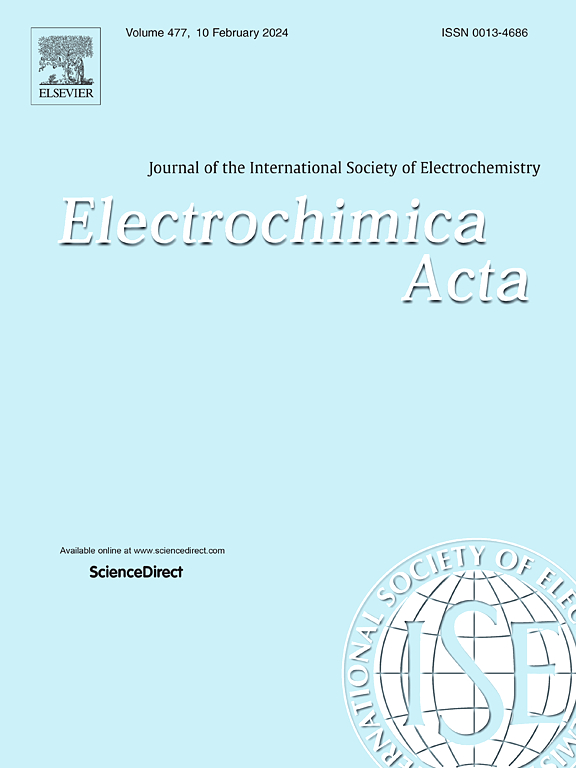用于电解过程中对苯醌实时检测的便携式金微针电化学传感器
IF 5.6
3区 材料科学
Q1 ELECTROCHEMISTRY
引用次数: 0
摘要
研制了一种简化制作的实时对苯醌(PBQ)传感器,并将其与有机电合成相结合,用于电化学生产过程中的原位检测。便携式微针传感器采用自支撑型纳米孔金线衬底,采用氟离子调制阳极氧化、抗坏血酸和SnCl2混合溶液化学还原两步工艺制备。在阳极氧化过程中引入氟离子可显著提高电化学检测性能(PBQ还原性能提高83%),这归功于氟离子在孔隙结构工程中的强配位能力。该传感器的检测范围为5.56 μM-1.53 mM,可涵盖典型生产过程中PBQ的初始浓度和终浓度。HPLC对比验证结果表明,该方法的测定精度为±3.9%,在空白基质和含有添加剂的复杂反应混合物中均能保持精度。关键性能指标包括1.0秒的响应时间和连续7天的持续运行稳定性(<;5%的信号衰减)。该装置对常见共存物质苯酚(99%回收率)、间苯二酚(92.8%)、儿茶酚(CT, 94.8%)、对苯二酚(HQ, 98.9%)、马来酸(MH, 91.6%)和草酸(OA, 90.4%)具有良好的选择性。该方法建立了自适应化学监测平台的原型,展示了在各种电化学合成应用中实时过程分析的巨大潜力。本文章由计算机程序翻译,如有差异,请以英文原文为准。


A portable gold microneedle electrochemical sensor for real-time detection of p-benzoquinone in electrolysis process
A real-time p-benzoquinone (PBQ) sensor with simplified fabrication was developed and integrated with organic electrosynthesis for in situ detection during electrochemical production. The portable microneedle sensor was constructed using a self-supporting nanoporous gold wire substrate, fabricated through a two-step process: anodization under fluoride ion modulation, and followed by chemical reducing in a mixed solution of ascorbic acid and SnCl2. The introduction of fluoride ions during the anodization significantly enhanced the electrochemical detection performance (83 % PBQ reduction property improvement), attributed to their strong coordination capability in pore structure engineering. The sensor's detection range (5.56 μM-1.53 mM) was designed to encompass both initial and terminal PBQ concentrations in typical production processes. Comparative validation with HPLC demonstrated a measurement accuracy of ±3.9 %, maintaining precision in both blank matrices and complex reaction mixtures containing additives. Key performance metrics included 1.0 second response time and sustained operational stability over 7 continuous days (<5 % signal attenuation). The device exhibited exceptional selectivity against common coexisting species: phenol (99 % recovery), resorcinol (92.8 %), catechol (CT, 94.8 %), hydroquinone (HQ, 98.9 %), maleic acid (MH, 91.6 %), and oxalic acid (OA, 90.4 %). This methodology establishes a prototype for adaptive chemical monitoring platforms, demonstrating significant potential for real-time process analytics in diverse electrochemical synthesis applications.
求助全文
通过发布文献求助,成功后即可免费获取论文全文。
去求助
来源期刊

Electrochimica Acta
工程技术-电化学
CiteScore
11.30
自引率
6.10%
发文量
1634
审稿时长
41 days
期刊介绍:
Electrochimica Acta is an international journal. It is intended for the publication of both original work and reviews in the field of electrochemistry. Electrochemistry should be interpreted to mean any of the research fields covered by the Divisions of the International Society of Electrochemistry listed below, as well as emerging scientific domains covered by ISE New Topics Committee.
 求助内容:
求助内容: 应助结果提醒方式:
应助结果提醒方式:


